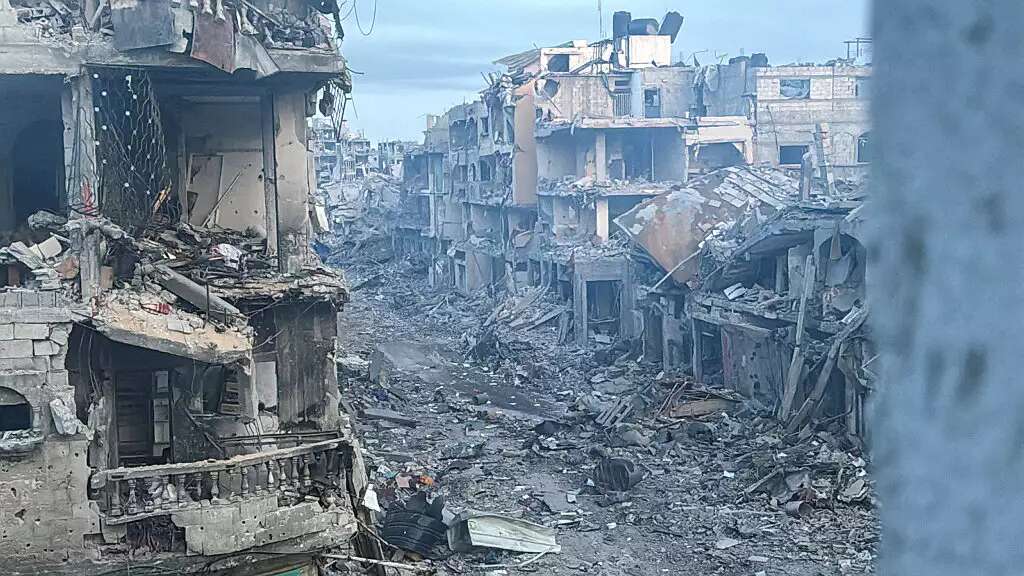The Meir Amit Intelligence and Terrorism Information Center estimates that uncertainty regarding the duration of Gaza's reconstruction, particularly in the northern part of the Strip, is expected to increase frustration among residents. Many are likely to return to displacement camps in the southern part of the Strip, where basic infrastructure for survival exists and humanitarian aid is consistently supplied.
The research center noted that in light of President Donald Trump's proposal to make Gaza's residents leave, either temporarily or permanently, the devastation may prompt young Gazans to consider leaving for foreign countries in the hope of building a better future.
The report's authors assessed that Hamas will attempt to suppress critical voices by force. However, given the widespread public frustration and the extensive destruction in Gaza, it will be difficult for the terrorist organization to maintain its "victory" narrative without presenting concrete solutions for residents. Hamas may try to shift responsibility to another entity, such as the Gaza governance committee that Egypt is working to promote, while striving to preserve its military power.
The report also provided data on movement toward northern Gaza. According to monitoring of movement from southern to northern Gaza, 545,355 people crossed the Netzarim Corridor between January 30 and February 3, 2025. Of those, 62% moved independently, while 38% were families. Among the returnees, 66% headed to northern Gaza, while 34% went to Gaza City. Additionally, 36,620 people crossed southward through the Netzarim Corridor between January 27 and February 3, 2025, according to data from ReliefWeb.

The report highlighted testimonies from Palestinians who returned to northern Gaza and vowed never to leave again. One such case was Wasim Al-Za'im, who was interviewed by the Palestinian newspaper Al-Ayyam. He expressed deep regret for having fled northern Gaza at the start of the war, saying he would never repeat the experience, even if it meant facing death for himself and his family. He described his displacement as a bitter ordeal he would never forget. According to him, those who remained in their homes ultimately fared no worse than those who were displaced.
Another testimony came from Samiha Saad, who, after returning to her home in the Sheikh Radwan neighborhood of Gaza City, described the experience as so harrowing that she vowed never to go through it again, regardless of circumstances. "Death here is a million times better than a life of displacement," she stated.
Despite the relief felt by many Palestinians upon returning home, the reality of widespread destruction quickly led to frustration, anger, and despair. The report stressed that many residents who initially returned to northern Gaza soon moved south again after realizing they had no homes to return to.
Journalist Hossam Sha'at described the dire situation: "People returned to ruins without tents, without drinking water… They are trying to rebuild their lives, gathering scraps of fabric and wood, perhaps from what remains of their homes. They walk hundreds of meters in search of water or food, sleep in the open, and spread out on the ground under the sky. As for those whose homes are still partially standing, they are trying to repair them as best they can to live among the rubble."
A Palestinian youth was documented holding a small child he had adopted after the child's parents were not found. The young man, a resident of Jabaliya, had returned to northern Gaza after staying in a school in Rafah. "What is there for us in the north? Why return? Our homes are destroyed. We don't even have tents there," he lamented.
The report also included criticism from Palestinians against Hamas, though it emphasized that such sentiments are not widespread due to fear of the terrorist organization.
Dr. 'Az al-Din Shahin, a physician from Gaza, commented: "The supply of water to all northern areas depends on clearing the rubble from the roads and reopening them, as well as bringing in heavy equipment to restore water lines, at least at a minimal level. No one is even talking about the importance of this issue, because, of course, images of prisoner [hostage] releases are far more compelling than discussing the disasters we are living through."




